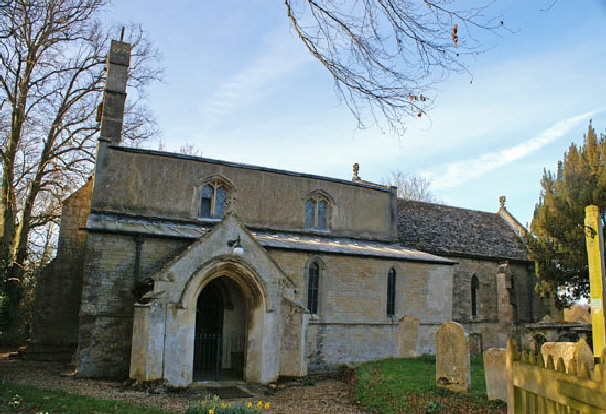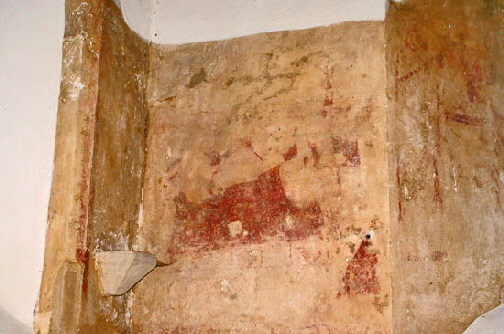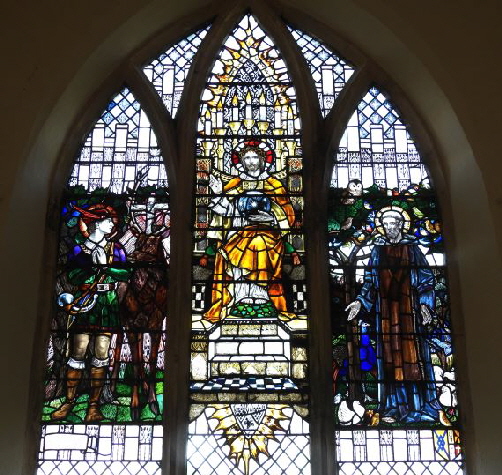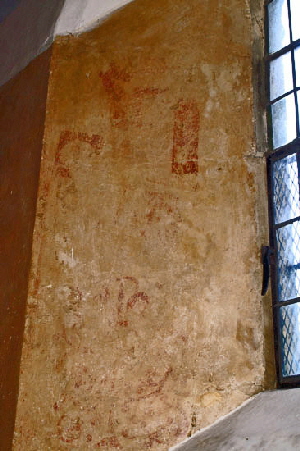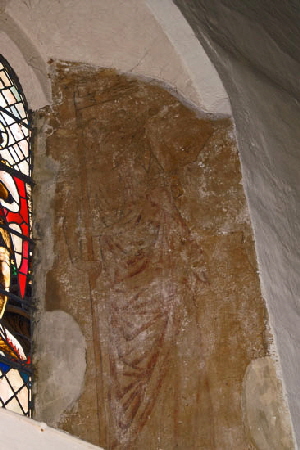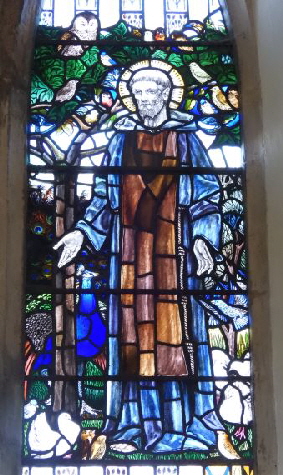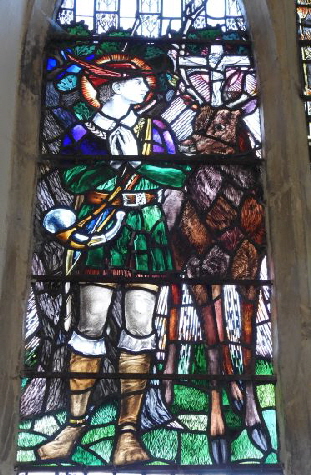|
Alphabetical List |
|
|
|
|
|
|
|
County List and Topics |
|
|
|
Please sign my Guestbook and leave feedback |
|
|
||||||||||||||||||||||||||||
|
south doorway. Pevsner puts the North arcade at about 1200 and its southern counterpart a few years later. Both have round arches so are in the Transitional rather than Early English style. The north arcade has hefty stiff leaf capitals more in the Romanesque style whereas the south arcade has roll moulded capitals that were, I suppose, felt to be in the more a la mode by the time it was built. The clerestory is fifteenth century Perpendicular (I am tempted to add “of course!”). The roof with its pretty unpainted bosses date from this time too. Both chancel and north aisle were rebuilt in around 1810 by the delightfully-named Rev Richard Twopeny and his architect brother, William. The two westernmost lancet windows on each side are believed to be the original Early English ones. The east window may be the reused Early English ones from the c13 chancel. The piscina is a delightful little gem amongst an otherwise plain church architecturally. Plain it may be, but there is much to enjoy here. There are some delightful roof bosses, some entertaining carved figures - including a mystery on the north wall (see below), coffin lids fragments of wall painting, as well as the tympanum and piscina. If you are in the area and want a change from the rather grand aisled and towered churches around Rutland then call in here (and nearby Essendine with its gorgeous Norman south doorway) for a total contrast and to celebrate the little joys that it has to offer. |
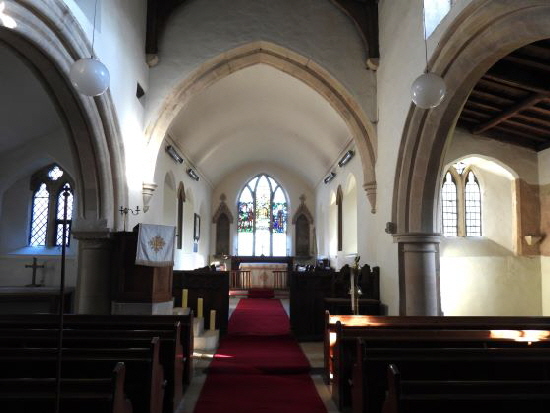 |
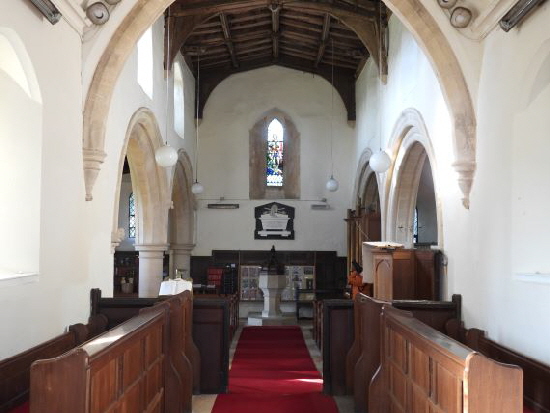 |
|
Left: The view to the east end. Note the narrow aisles with their deeply-splayed east windows. Right: The view to the west with its Early English lancet window. The chancel arch, too, is EE. |
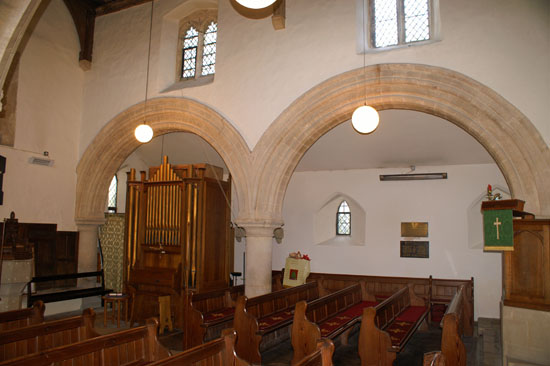 |
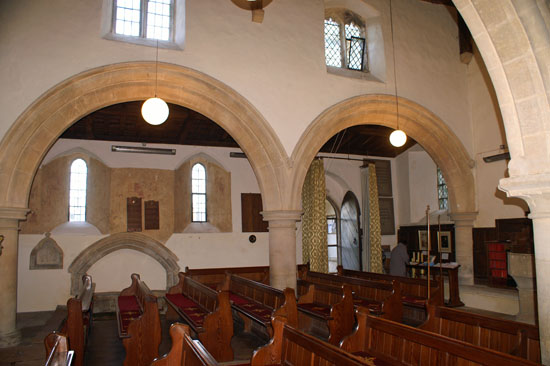 |
|||||||||||||
|
Left: The North arcade with its roll moulded round arches and its capitals that are typically late Norman; a piece of Transitional architecture. Right: The somewhat later South arcade has more “sophisticated” plain capitals but still has rounded arches. It rather seems that, unlike many of his contemporaries, the architect favoured keeping symmetry between the two arcades rather than indulging himself in the new-fangled Early English pointed arches. Here’s to him |
||||||||||||||
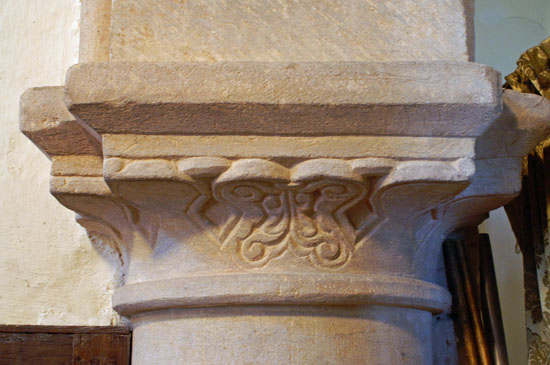 |
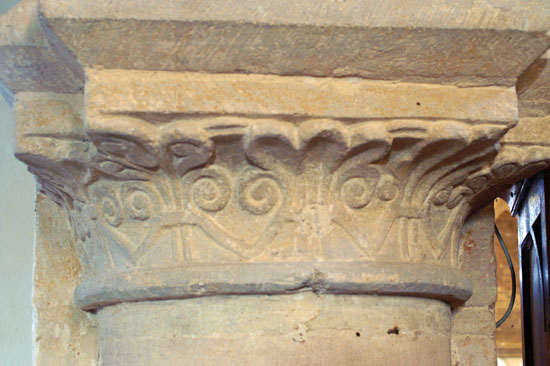 |
|||||||||||||
|
Although the capitals on the north arcade owe more to the Romanesque than to the Early English style, the decoration are rather unusual - very unusual in the case of that pictured left - demonstrate the architectural upheaval that was occurring at this time. |
||||||||||||||
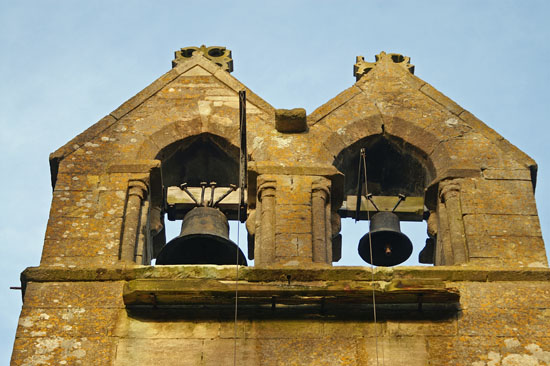 |
||||||||||||||
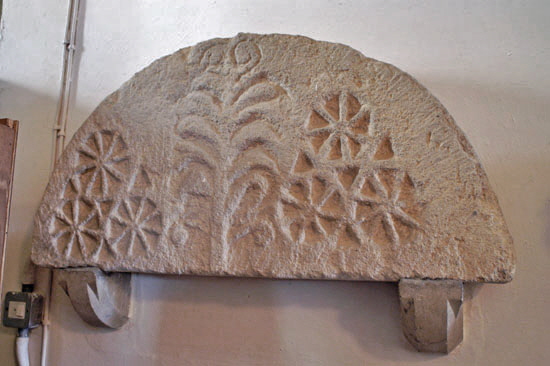 |
||||||||||||||
|
Left: The preserved tympanum is a simple and unsophisticated one with a “Tree of Life” centrepiece flanked by spoked roundels. Right: The double bellcote. Compare it with that of nearby Essendine which dates from around the same period. |
||||||||||||||
 |
||||||||||||||
|
I advise church crawlers “always look up” and “always have binoculars or telephoto lens.” The ceiling here has some superb carved images, easy to miss in the low light. |
||||||||||||||
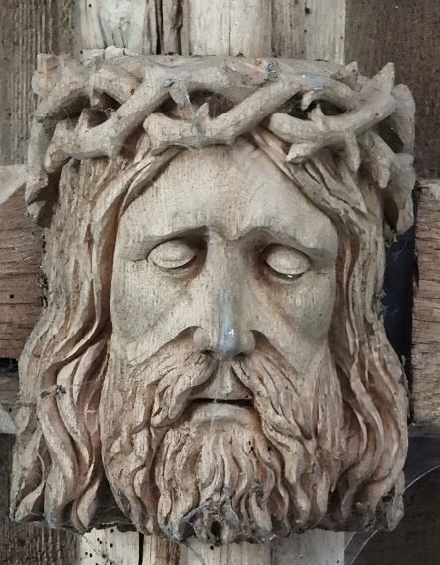 |
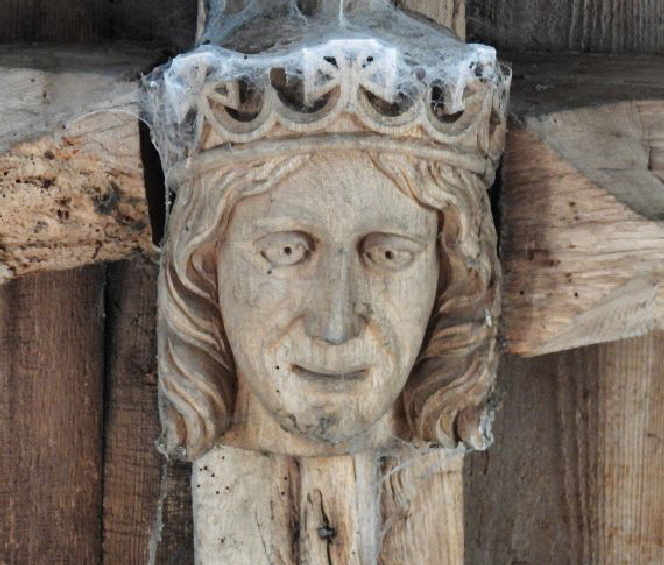 |
|||||||||||||
|
Left: A pained and sorrowful Christ with a crown of thorns would rank with the very finest carved wooden bosses to be seen in a parish church. Right: The Church display claims this as Christ in Majesty. His crown, however, is distinctly secular and the face is unbearded so I think that this is the King of England at the time the roof was constructed. |
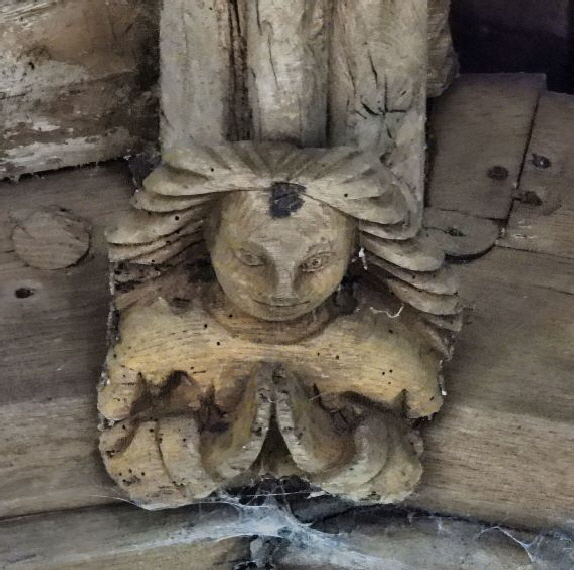 |
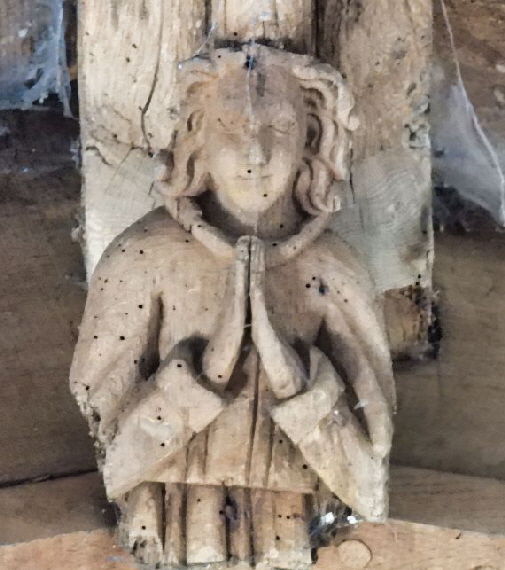 |
||||||||
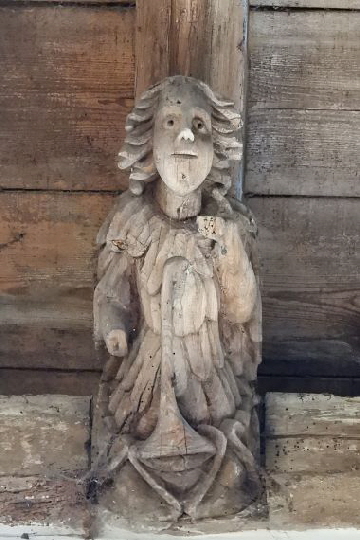 |
|||||||||
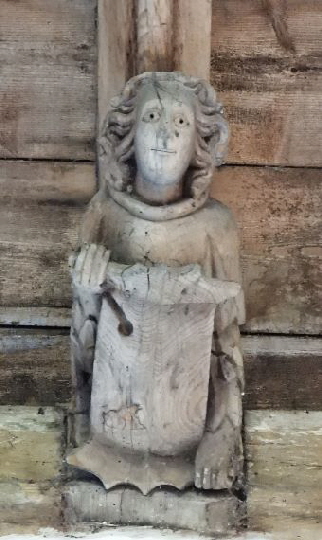 |
|||||||||
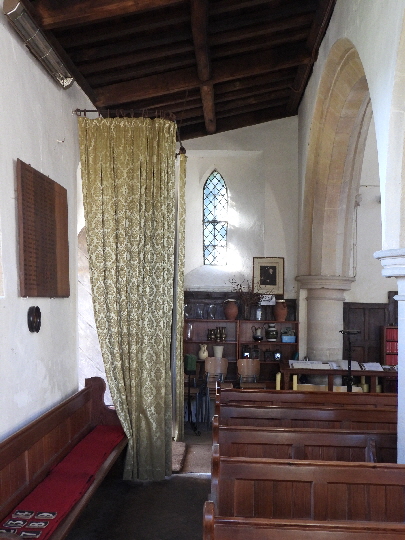 |
|||||||||
|
There are several angels to be seen on the ceiling. Those next to the wall (left and centre above) are cheerful-looking souls, mostly clutching shields. The lady on the left, however, is holding something quite different. I have seen it described as a “clarion” - a type of trumpet - but I have been unable to find a picture of one to verify it. Right: Looking west along the south aisle we can see how narrow it is, never having been widened since it was built in the thirteenth century as the small single lancet window attests. |
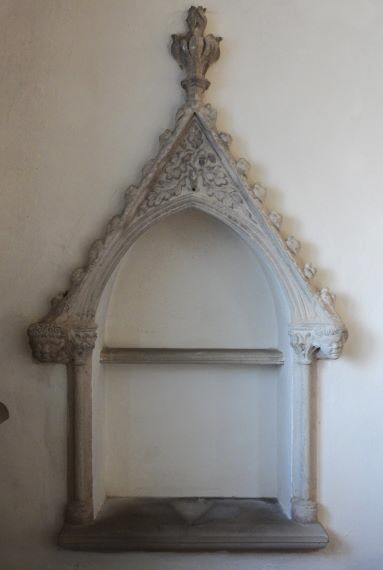 |
|||
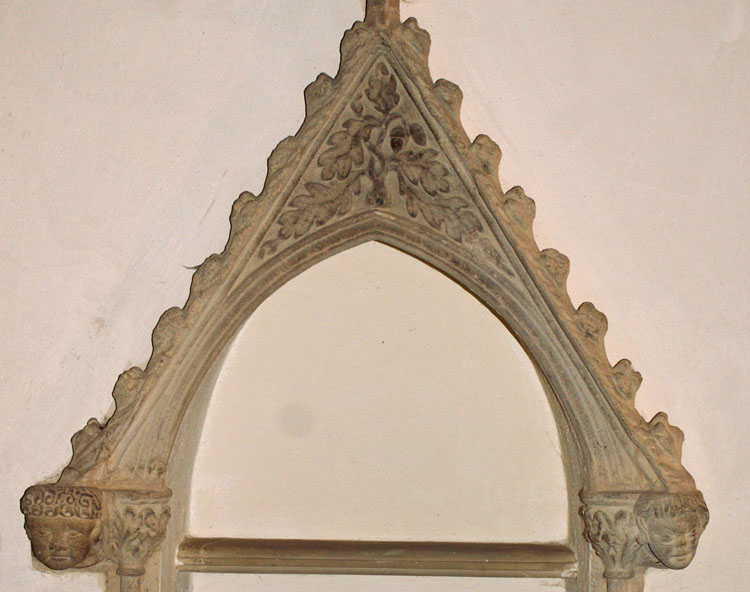 |
|||
|
The piscina is the only thing in this church that one might term “ostentatious”. It would grace any church. It clearly post-dates the main structures of this church. It is equally clearly too old to be contemporary with the nineteenth century chancel restoration so perhaps this was constructed in the fifteenth century and moved eastwards when the chancel was extended? |
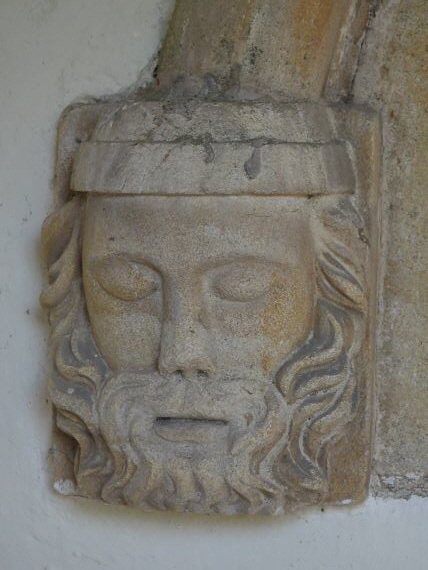 |
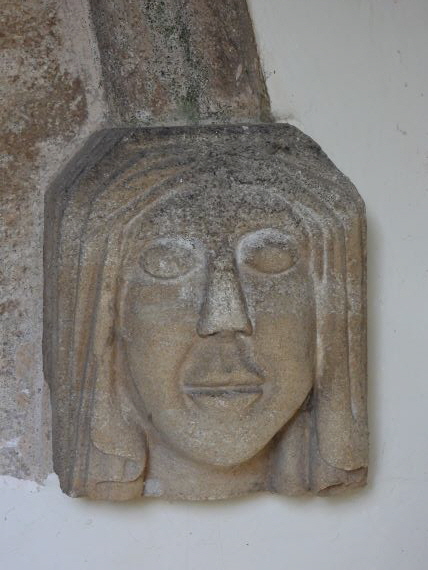 |
||||||||
|
THhs fine pair of label stops are either side of the south door. |
|||||||||
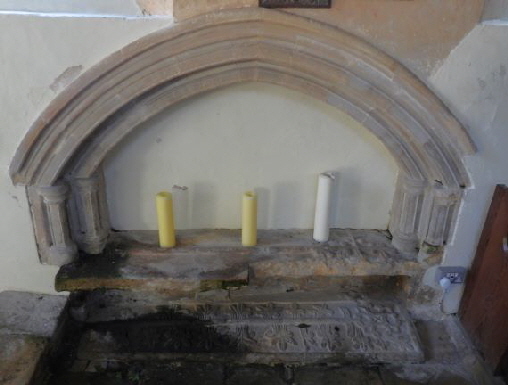 |
|||||||||
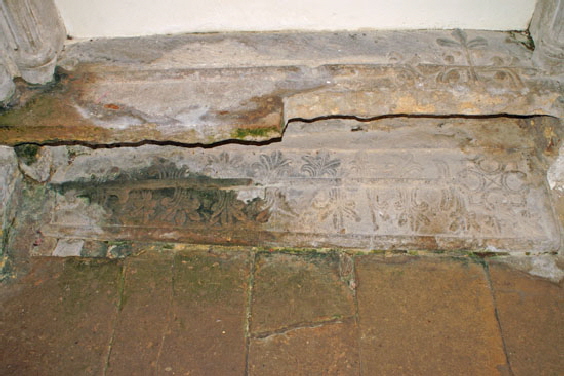 |
|||||||||
|
A burial niche in the South aisle that is reckoned by Pevsner to be late thirteenth century.. There are two coffin lids set into it, the lower of the two particularly fine and elaborate. |
|
|
||||||||||||||||||||||||||||||||||||||||||||||||||||||||||||
|
Left: The east window has three stained glass panels. They commemorte Hubert Francis Joseph Eaton who died in 1910. It is very nicely done.The central panel is very obviously Christ in Majesty, holding the orb of the world and wearing a crown of thorns. Centre: This is St Francis, Birds, including an owl, surround his head. There are others at his feet including a peacock to the left. Right: Well, I was convinced this was Robin Hood! Lincoln Green? Check. Hunting horn? Check. feather in his hat? Check. A stag is to his right, venison being the staple of our hero and his “Merry Men”. Look at the boots! Except it’s not Roin Hood, I am sorry to say. Myself, my friend Bonnie Herrick and all of my Church Crawling group were unanimous that it was, even though Little Catserton is a long way from Sherwood Forest. Then I twigged it. Francis is the second name Mr Eaton. Might the other image be St Hubert, after his first name? Sure enough, St Hubert who came from Liege and died in AD727 is the patron saint of hunters! You may call me Sherlock. |
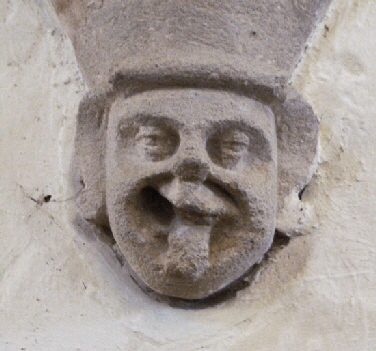 |
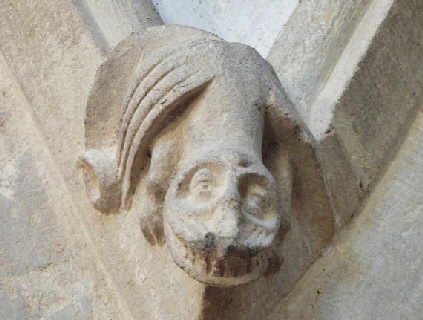 |
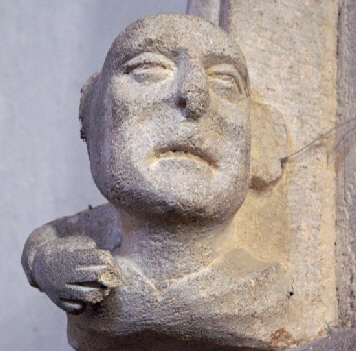 |
|||||||
|
Little Casterton is one of those churches which has no major draw but, as we have seen, plenty little curiosities and points of interest. These three grotesque carvings are from the nave. |
|||||||||
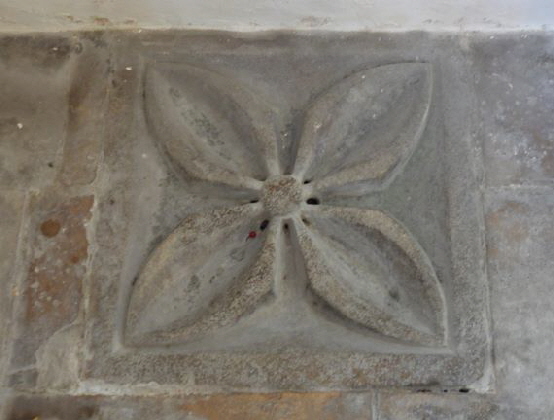 |
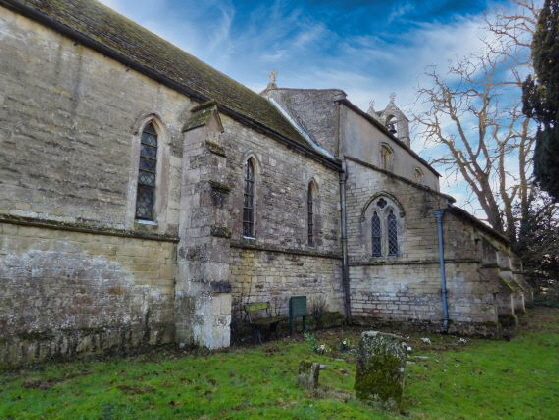 |
||||||||
|
Left: This little quatrefoil is in the floor of the north aisle. If you look closely there are six little holes at its centre, This is surely for drainage, possibly the recycled base of a piscina.. Right: The church from the north east with three Early English Lancer windows in evidence. The north aisle, however, was remodelled in 1810 and it has a window dating probably to the that time. |
|
Finally - The Mystery of the Little Casterton Imp |
||||||||
|
The North side of the church is a little neglected. The Church - an more to the point, its parishioners - no longer thinks of the North sides of churches as being “The Devil’s Side” although it is plain that the habit of putting all the grotty bits of the church on that side still lingers on in many locations! This is where you will find the ghastly stone sheds that often pass for “vestries” and the gruesome boiler houses - amongst other monstrosities. Oh, and of course the bins. To be fair, though, they are better placed here than on the south side where most churches now have their entrances. The North side of Little Casterton, though, yields a little puzzle. In the extreme north west corner, under the roofline and laid on his side is this cheeky little figure! He’s all on his own. His feet are damaged, but a full length figure like this is not terribly common. When you look closely he has been sculpted inside a cornice so he looks designed to be located in an angle somewhere. He fits quite snugly here for all the world as if this has always been where he is - but why would there be only one carving and why would it be laid on its side? The North aisle was rebuilt in 1810 so it seems possible that he was moved here at that time, perhaps because he was seen as a bit of fun - but that doesn’t explain where he came from. What is he doing? Is he dancing? Kicking a ball? You choose. His face is crude, almost primitive - but just look at those beautifully carved fingers on his right hand. From what period does he date? Is he, like the tympanum, a remnant of the original Norman church? The Early English period didn’t see much carving of this kind. I suppose we will never know, but maybe he is the more fun because of that. I have decided that he is the “Little Casterton Imp” and every bit as much fun as his more famous cousin in Lincoln! |
||||||||
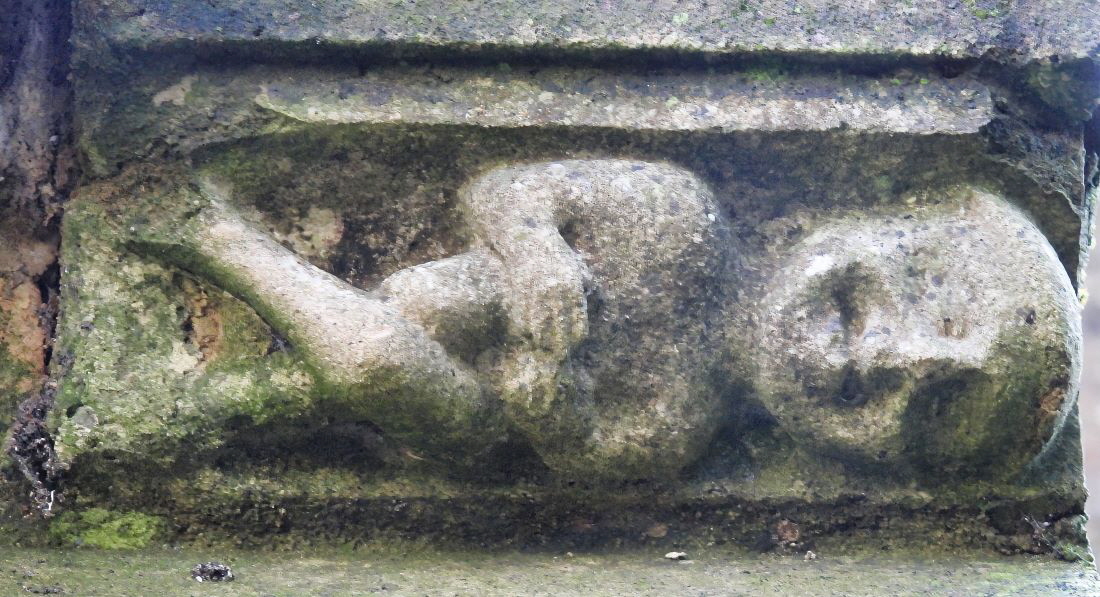 |
||||||||
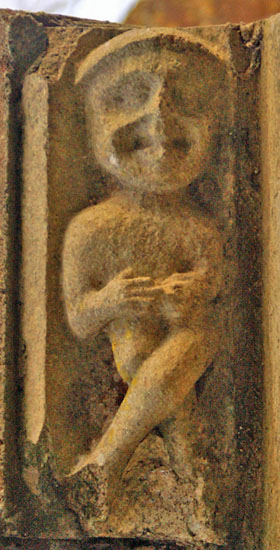 |
||||||||
|
|
||||||||
